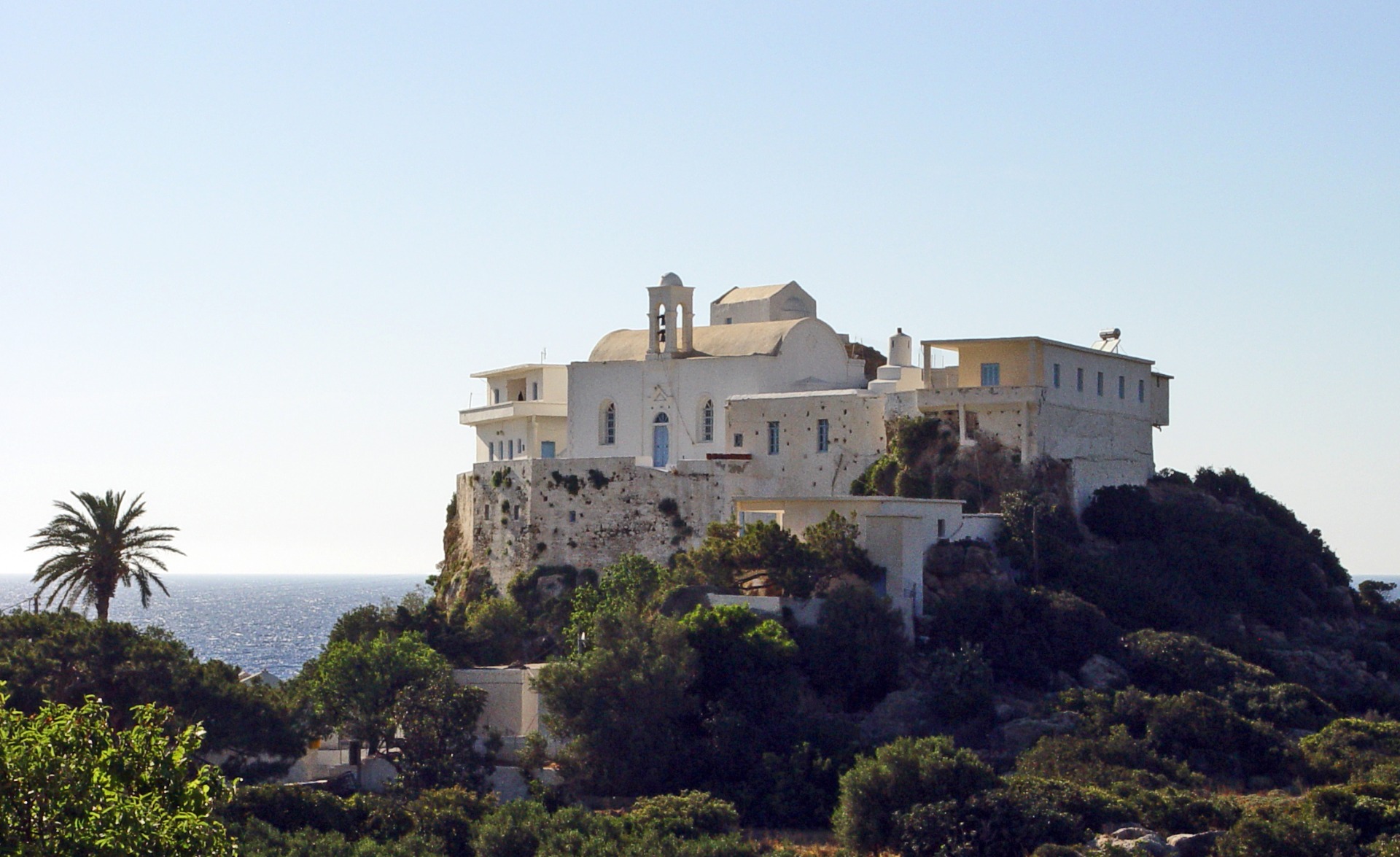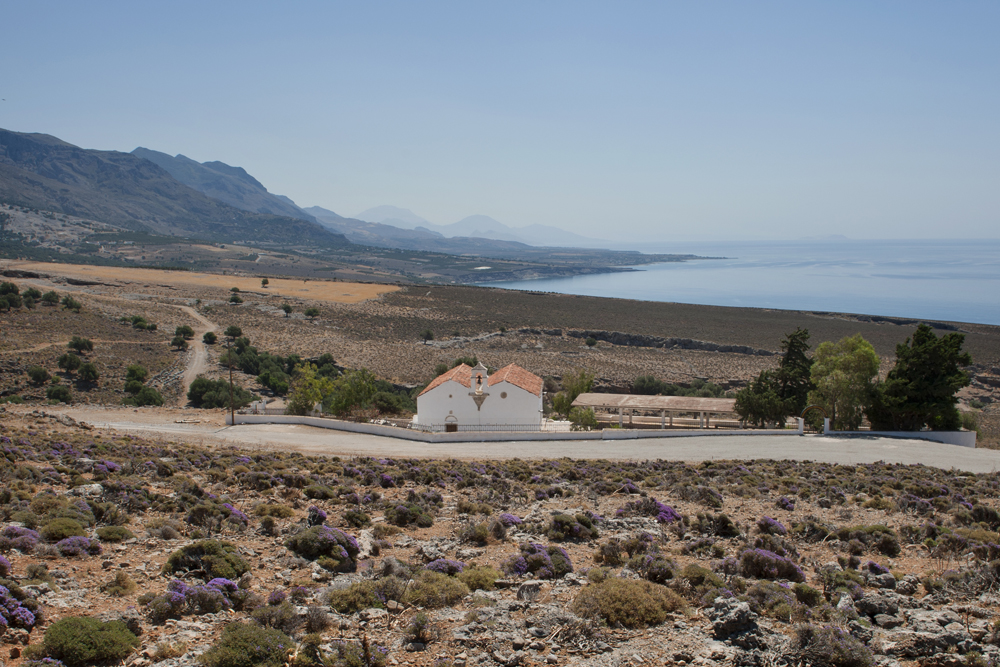Tribute to the Monasteries of Chania
Monasteries of Chania
Here you will find information about the Monasteries in Chania
Gouverneto Monastery
The Monastery of Gouverneto or Monastery of Our Lady of the Angels of Gouverneto is an Orthodox monastery located in Cape Chania, in western Crete. It is 19 kilometers from Chania and is located on a small plateau near the Monastery of Agia Triada Tzagarolo. The monastery was founded between 1537 and 1548. The monastery suffered destruction during the Ottoman times, and was set on fire during the revolution of 1821, but continued to be inhabited. The monastery has a fortress character, with a rectangular plan and had towers in a corner (both are preserved today). The catholicon of the monastery is a three-aisled church with a dome and a deacon. The façade of the church is influenced by Mannerism and features sculptural figures. Nearby is the Katholiko Monastery, which is also associated with the cult of St. John the Hermit
Chrysoskalitissa Monastery
Chrysoskalitissa Monastery is a 17th-century Eastern Orthodox Christian monastery located on the southwest coast of the island of Crete, Greece. Within the municipal district of Innachori of the municipality of Kissamos, the monastery lies about 72 kilometres southwest of Chania. Built up on rocks 35 metres above the water, it overlooks the Libyan Sea
Holy Monastery of Chrysopigi (Chania)
The Holy Patriarchal and Stavropegian Monastery of Chrysopigi is located in Chania, Crete, at a distance of 3 km. from the city, on the way to the port of Souda. It is dedicated to Panagia Zoodochos Pigi and celebrates Lent Friday. Thousands of pilgrims flock to the miraculous icon of the Virgin Mary. The Monastery was founded at the end of the 16th century and was male-dominated until recent years. The founder was Ioannis Chartophylakas from Chania, a doctor of medicine and philosophy, an important person of his time with great activity in the society of Chania.
Holy Monastery of St. John the Hermit
The Holy Monastery of St. John the Hermit or Katholikon Monastery is now a ruined monastery of the early 17th century. It is located a short distance from the Gouvernetos Monastery, inside the Avlaki gorge and near the cave where Saint John the Hermit died. The temple of the monastery consists of a small cave cavity, built with carved stone in the northern part, while in front of the temple there is a courtyard supported by domes. Around 1600, Jeremiah Tzagarolos built a bridge that connects the church with the opposite slope and acts as an enclosure for the cells. Around the bridge there are various spaces and auxiliary buildings of the monastery.
Gonia Monastery
Monastery of Our Lady of Gonia or Monastery of Panagia Hodegetria is an Orthodox monastery located 1 km north of Kolymvari and some 26 km from Chania, on the southeast coast of the Rodopos peninsula in Crete, Greece, overlooking the Gulf of Chania. The monastery was given the same name as Hodegon Monastery in Constantinople. Both were named in honor of the sacred icon painted by Luke the Evangelist. The icon featured the Virgin and Child. It is traditionally called Hodegetria ("She who shows the Way"). Some churches adopted the name Madonna of Constantinopli in honor of the Hodegetria icon.
Agia Triada Monastery
Agia Triada Monastery or the Monastery of Agia Triada Tsangarolon is a Greek Orthodox monastery in the Akrotiri peninsula in the Chania regional unit, Crete, Greece. It also contains a museum. The monastery, whose name means "Holy Trinity", was built in the 17th century by two brothers of the Venetian Zangaroli family on the site of a pre-existing church. The monks produce and sell wine and olive oil on the premises.
Monastery of the Transfiguration in Kastello
In the area of Agia Kyriaki, on a rocky hill under the ruins of the Byzantine castle "Kastellos", the new monastic buildings of Chrysopigi have been erected. The Metamorphosis in the Castle has been built with excavated stone, with the minimum possible ecological footprint and according to the principles of bioclimatic architecture. The aim is to create a whole, where the built and unbuilt space are in balance, so as to highlight the natural environment and its harmonized relationship with the buildings. This place was blessed with his presence in 2002 by His Holiness, the Ecumenical Patriarch Bartholomew, who walked the paths of the area and laid the foundation stone of the new Katholikon of the Transfiguration on June 19, 2002. On Sunday, September 2, 2012, His All-Holiness Ecumenical Patriarch inaugurated the Katholikon of the Transfiguration.
Panagias Thymianis (Mother Mary of the thyme) Monastery (Komitades)
According to tradition the name of the monastery comes from an icon of Mother Mary found under a thyme bush and has been a sacred site for the residents of Sfakia.
The catholicon (main church) of the monastery is a two-aisled church dedicated to the Nativity of Mother Mary (Gennisis tis Theotokou) and the Holy Trinity (Agia Triada), with murals dating back to the Venetian rule period. Many consider it the 'Agia Lavra of Crete', since this is where the Liberation Revolution was declared in 1821, just like the mainland one was declared in Agia Lavra Monastery in Peloponnesus. This is why there is an annual mass and commemorative event held on the last Sunday of May at Panagia Thymiani.
For more Monasteries visit the website Monasteries of Greece
For more Monasteries in Crete visit the website ORTHODOX CRETE









